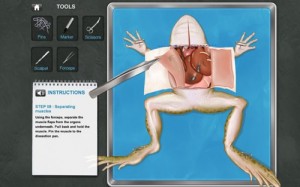 Animal dissection is one of the most controversial topics in science education. Scientists, teachers, animal rights activists, and parents and students all have a opinion about whether animal dissection is necessary or even educational. But despite strong arguments on both sides, it remains a core part of many schools' biology curriculum.
Animal dissection is one of the most controversial topics in science education. Scientists, teachers, animal rights activists, and parents and students all have a opinion about whether animal dissection is necessary or even educational. But despite strong arguments on both sides, it remains a core part of many schools' biology curriculum.
In addition to controversies about the ethics and utility of live animal dissection, many schools now also face financial pressures that make the cost of equipping classrooms and science labs with dissection kits and frog specimens prohibitive.
And that's where the ubiquitous phrase "There's an app for that" comes in. The educational software maker Punflay provides one alternative to live animal dissections. Punflay has built dissection apps, available on iPad and desktop, which simulate the dissection process. Currently Punflay has two versions: frog and rat dissection.
Punflay's apps provide step-by-step instructions that move a student through the actual dissection process. The app simulates that process and uses virtualized dissection instruments -- pins, scalpels, markers, and forceps -- just as students would in real life.
As students work through the various anatomical systems, they can view 3D images of the internal organs. They can also learn information about different types of frogs, frogs' life cycle, comparisons of frogs' and humans' anatomy, as well as annotated descriptions of the various frog organs.

